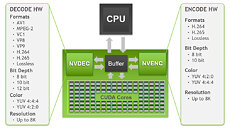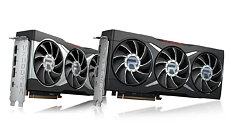
AMD Ryzen 7000 "Phoenix" APUs with RDNA3 Graphics to Rock Large 3D V-Cache
AMD's next-generation Ryzen 7000-series "Phoenix" mobile processors are all the rage these days. Bound for 2023, these chips feature a powerful iGPU based on the RDNA3 graphics architecture, with performance allegedly rivaling that of a GeForce RTX 3060 Laptop GPU—a popular performance-segment discrete GPU. What's more, AMD is also taking a swing at Intel in the CPU core-count game, by giving "Phoenix" a large number of "Zen 4" CPU cores. The secret ingredient pushing this combo, however, is a large cache.
AMD has used large caches to good effect both on its "Zen 3" processors, such as the Ryzen 7 5800X3D, where they're called 3D Vertical Cache (3D V-cache); as well as its Radeon RX 6000 discrete GPUs, where they're called Infinity Cache. The only known difference between the two is that the latter is fully on-die, while the former is stacked on top of existing silicon IP. It's being reported now, that "Phoenix" will indeed feature a stacked 3D V-cache.
AMD has used large caches to good effect both on its "Zen 3" processors, such as the Ryzen 7 5800X3D, where they're called 3D Vertical Cache (3D V-cache); as well as its Radeon RX 6000 discrete GPUs, where they're called Infinity Cache. The only known difference between the two is that the latter is fully on-die, while the former is stacked on top of existing silicon IP. It's being reported now, that "Phoenix" will indeed feature a stacked 3D V-cache.































































